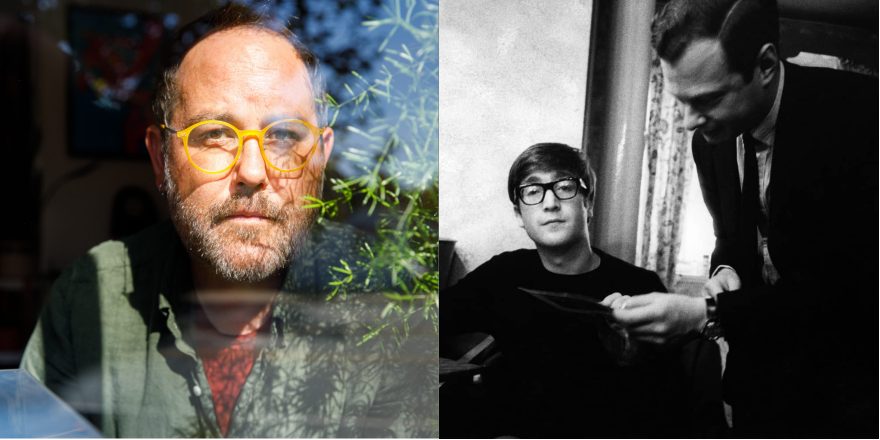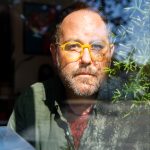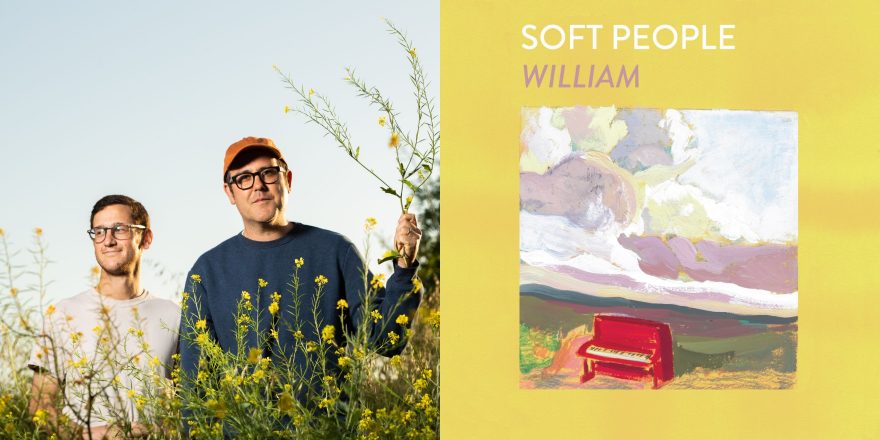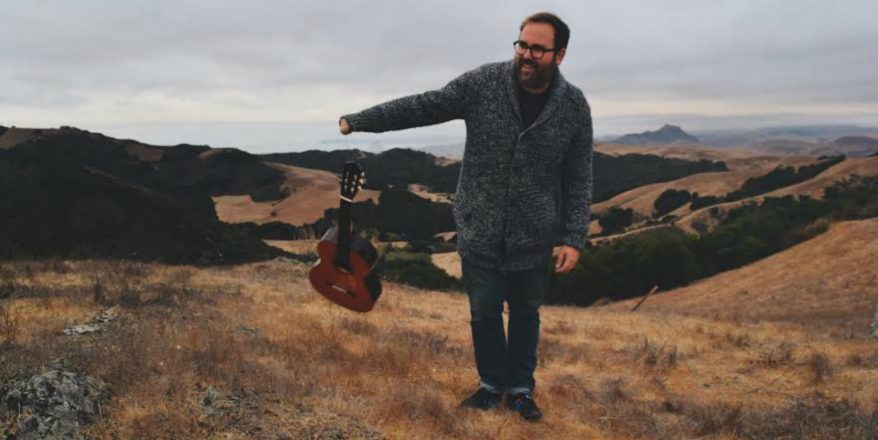When I was in elementary school, late in the last century, I remember a playground game called “Smear The Queer.” Maybe you know it? It’s a simple game where one person throws an object (any object, really) into the air, and the person it lands closest to (the queer) has to pick it up and run from all the other players, who are trying to dogpile them (smear them). I don’t remember if I played the game or not, just that kids did play it, and the particular way they yelled the world “queer.”
As I grew up, that word changed its meaning, as words and ideas tend to do over time. By junior high, nobody was a queer anymore; if they were gay, like me, they were a faggot. Queer as a slur felt relatively benign by high school, in the late ‘90s, and by college in the early 2000s, I was enrolled in a Queer Studies course called Feminist Science Fiction at the CSU. Over the course of the first quarter of my life, the meaning of queer changed from weaponized violent slur to a reclaimed academic adjective — an identity one could study, and perhaps take some pride in.
The metamorphosis of this peculiar word — which is at once a noun, an adjective and, most recently, a verb — is due at least in part to literary theorists. Academics like Eve Kosovsky Sedgwick and Judith Butler challenged the dominant heteronormative readings of literature and culture by “queering” them — that is, by re-examining and rehistoricising the established modes of understanding historical subjects. For example, literary theorists and historians have queered our understanding of poet Emily Dickinson through critical reexaminations of her work and letters, which has resulted in a near consensus that Dickinson actually was queer, as opposed to her prior treatment as an asexual recluse.
Now, queering things is an idea used in the mainstream. There’s a film and a very popular TV show that portray a radically revised queer version of Dickinson. And the mainstream use of the verb to queer isn’t just limited to revising the past. Out Magazine recently published an article titled, “How The Recording Academy is Queering The Grammys Behind the Scenes.” If queering historical subjects is an act of revision, this use — of “queering the Grammys” — is an act of changing the present; of, in this case, making the Recording Academy a bit gayer.
So to some degree, when we talk about queering something, we are talking about a temporality that is flexible. We can queer the past, we can queer the present, and by these two actions, potentially queer the future. What I’m talking about, I guess, is a sort of queer time travel: As writers, we can go back in time, change a couple of things — or at least alter our perception of them, and perhaps the perceptions of others — and those things may alter the present and future in interesting and maybe unpredictable ways. By queering our understanding of the past, we’re excavating an erased history of our people; we’re interpreting evidence and imagining narratives surrounding historical figures like Dickinson in order to produce a story-rich history for ourselves and for those to come. We’re myth-making in order to make a future for ourselves and our children.
In my life there has been no greater myth than the Beatles. I became a Beatlemaniac in what might be considered the second wave, in the 1990s, when I was in my early teens and The Beatles Anthology was released. I first encountered their music when my Mom borrowed some Beatles CDs from the public library and I was instantly hooked. It was Rubber Soul that really got me, followed by Revolver, Sgt. Pepper’s, and then Hard Days Night, Help!, and the rest. It was a joy to discover all of this music. It was a joy to be a teenage fan. I was in love with all of them, although I could never admit it, not like that. But it was OK to display my affinity in another way — through being a fan. Nothing gay about that! The Beatles made it possible for me to express my adoration of a bunch of cute young guys from Liverpool publicly and without reproach. In fact, it was encouraged!
I got a bass for Christmas, and learned the riff from “Daytripper,” and then “Birthday.” I figured out how to play the figures in “I Saw Her Standing There,” which is how I learned to play bass and sing at the same time — a tricky thing. And I endlessly doodled on notebooks about how much I loved the Beatles, and no one said a bad word about it. In these songs was such peculiar longing, which I now identify as very queer. “Chains/my baby’s got me locked up in chains/and they ain’t the kind/that you can see.” That’s queerness. Or how about, “There is a place/that I can go/when I feel low/when I feel blue/and it’s my mind/and there’s no time/when I’m alone.” That’s queerness, too: this universal longing that, while not exclusive to queer relationships, certainly defines many of our cultural artifacts, as far back as Sappho up until the present day (a subject that I’ve written about previously here). The Beatles wrote this longing into so many of their strange characters: the Nowhere Man, The Fool On The Hill, The Queen of Marigold, Eleanor Rigby and Father Mackenzie. Where do the lonely people belong? Possibly at the local gay bar?
Maybe that’s why, years later, I found myself back in that space, daydreaming about the Beatles. It started for me with a simple, silly question. I was listening to the b-side of Abbey Road, and I wondered: what made Mr. Mustard such a mean old man? Who was this person living in a park, shouting obscenities at people? Mustard is a strangely shallow John Lennon composition, and the song offers so many possibilities, particularly with its relationship to Polythene Pam — a decidedly queer character, who’s “so good looking that she looks like a man.” The interesting thing about this question is that I didn’t Google it, not right away. I decided that the best thing to do would be to write the story myself, to answer my own question through songs.
So, I got to it. I started writing little songs that used Beatles images to begin to tell a story. I didn’t have the story in mind as I went, I just decided I would write some Beatle-esque music, include references to their songs, musical and lyrical, and see what happened. I wrote a song called “Ramon” first, which was a portmanteau of “Ram On,” from the Paul and Linda McCartney album Ram. And further, I decided to borrow the first line, too, as a sort of writing prompt: “Ramon, give your heart to somebody soon,” (that’s where Paul’s bit ends) and then I finished the line “before you fade away. Ramon, show your cards to somebody, who won’t cause you pain — crawl through that window.”
What resulted from this beginning was eventually a full 34-minute LP, which is now being released on Kill Rock Stars. Instead of talking about the record a ton, I want to share with you two of the music videos we produced for it: “Ramon” and “Jerome” which, together, tell the central arc of the story.
Through making this album and associated material, I’ve realized just how queer the Beatles are. My story of what made Ramon Mustard so rough around the edges has to do with an unrequited love so intense it ended up destroying his life. The gist of it is: he just couldn’t let go, and his love turned into something much more toxic and dangerous, and alienated him from everyone else.
This is a familiar queer story, and as I did research for this essay, I began to see that it was a story central to the Beatles themselves. Brian Epstein, the architect of Beatlemania, was of course a closted gay man, whose life ended tragically early. When I was first introduced to the Beatles, Epstein’s sexuality was discussed in the way it was always discussed in the ‘90s — in sort of a not that there’s anything wrong with that mentality. Essentially, Epstein’s sexuality was an unfortunate side note that probably caused him a lot of grief and perhaps was a threat to the Beatles’ success.
The culture’s interpretation of Epstein’s sexuality has changed in the current wave of mass interest in the Beatles, coinciding with the release of Get Back. Epstein is now cast in a heroic light, post-marriage equality, post-Love is Love and the roaring fandom of RuPaul’s Drag Race normalizing so many aspects of queer culture. This is illustrated, literally, in Vivek Chandry’s graphic novel The Fifth Beatle which chronicles Epstein’s time with the Beatles, his affairs with less-than-desirable men, his deep friendship and trust with the band and his eventual overdose, which Chandry explicitly links to his struggle as a closeted gay man at the center of the biggest media sensation the world has ever seen.
Even still, as much as portrayals like Chandry’s are a welcome reprieve from Epstein being footnoted as a lucky guy who was unfortunately queer, this new genre of queer understanding leaves something to be desired. Like the depictions of Elton John and Freddy Mercury in Rocket Man and Bohemian Rhapsody, the most heteronormative aspects of these gay men are celebrated while anything moving beyond that is reviled. And there is always a gay villain who is, somehow, the focal point of the story, not the toxic society surrounding these queer entertainment icons. This is not queering history: It is heteronormalizing queer history.
Epstein’s story, especially as it intersects with Lennon’s, is remarkably similar to the story I wrote in Ramon. This was not intentional. I made my story up, and only later read in more detail about Epstein, his experiences being beaten, and blackmailed, and his heavy drug use. But also his relationship to Lennon, so artfully imagined in the 1991 film The Hours and Times by Christopher Münch, which speculates on Lennon and Epstein’s infamous trip to Barcelona in 1963. In fact, serendipitously, it was the actor who played Ramon in my film, who works for the film distribution company Oscilloscope, who told me about Münch’s film.
In 2013, Carlo Cenciarelli wrote convincingly about The Hours and the Times and how the film “writes against the overwhelmingly heterosexual credentials of the Beatles by imagining an attraction between [Lennon and Epstein].” Post-Beatles, Lennon would talk about this trip and the “intensity” of his relationship with Epstein, but would never publicly admit to having a physical relationship, a focal point which the media and maybe fans seem obsessed with, but which is entirely beside the point. Regardless of whether or not their relationship was ever queer in a literal, sexual sense, I recognize in their story a kind of queer desire — an indispensable ingredient in the Beatles recipe.
It is clear that Epstein was in love with Lennon, and it could be easily argued that his initial attraction to the band was simply about a severe crush on a straight-ish man that perhaps, at times, returned Epstein’s affection. In queer terms: a tale as old as time. And although Yoko Ono said in a 2015 interview that she thought he was probably bisexual, Lennon had a complex relationship with queerness that mirrored his complex relationship with women. At turns he was an abuser and an empowerer of both gay men and women. He admitted to being “a hitter” of women, and he reportedly derided Epstein behind the scenes (see, the original placeholder lyrics to “Baby You’re A Rich Man,” as documented by Ian MacDonald in 2005). But later he championed both the women’s rights and gay rights movements, particularly in song, with risky compositions like “Woman is the N***** of the World” and his chart-topping duet with Elton John, “Whatever Gets You Through The Night.” Lennon was most forward-thinking and empathetic within the context of his songwriting, and older songs like “You’ve Got To Hide Your Love Away” can easily be read as a protest song against the need for queer people to hide their sexuality, and the isolating effects that having to live a secret life can have on a person.
The rest of the Beatles, despite Epstein’s influence — or, actually, very much because of it — were overwhelmingly heterosexual. Epstein actually normalized and homogenized the Beatles’ appearance, making it consumable for teenage girls and their families all over the world. As Sasha Geffen points out in Glitter Up The Dark: How Pop Music Broke The Binary, the Beatles’ feminized aesthetic may have paved the way for future forays into glam and androgyny, but it’s important to remember this was a feminization of an aesthetic that falls more in line with heteronormativity and the boy-girl binary than anything else. Before Epstein’s influence, the Beatles were clad in Tom of Finland-style German leather! Think about it: could the Beatles have been the icons of the leather daddy movement? Even still, Geffen makes the point that through the Beatles’ appropriation of Black American girl groups, and particularly Ringo’s turn at the mic in his rendition of “Boys,” there was something definitely queer happening in the band’s early output.
Digging deeper into the Beatles’ catalog yields more interesting results as well. Consider Sgt. Pepper’s deep cut “Good Morning Good Morning,” one of the queerest Beatles tracks in that it features Lennon’s savage critique of the heteronormative mundanity that he’d spend the rest of his life railing against. “Nothing to do to save his life/call his wife in/Nothing to say but what a day/how’s your boy been.” Lennon called the song “a throwaway” and “a bit of garbage,” but he called a lot of his best songs similar things! To me, this song is about how dead-inside people feel living in the doldrums of heteronormative, workaday life, and how, through escaping routine and the pursuit of sex, the speaker of the song comes back to life a bit. A sex-positive rocker that’s dead set against the monotamy of monogamy? Sounds queer to me.
Or how about “Two Of Us” and “Don’t Let Me Down” considered as a pair. These songs, more than any other, are about John and Paul’s relationship. “It’s like you and me are lovers,” John quips in Get Back. “We’ll have to camp it up for those two,” he continues. But even as they sing about the beauty of their partnership in “Two Of Us” they’re knocking on the doors of divorce with “Don’t Let Me Down,” as John confesses that he’s found another creative partner, one who has “done him” like nobody else has. The homosocial bonds between Paul and John are pushed to their limit by the end of the Beatles, and finally break. It’s clear from the new edit of the film that John left Paul. It’s such a heartbreaking thing to watch, and yet, ob-la-di, ob-la-da, I suppose.
When I began writing this essay, it was with the understanding that the Beatles were in need of queering — that, despite their connection to Brian Epstein, and some occasional glimmers of queerness in the songs themselves and in the life of John Lennon, that this was heteronormative music for heteronormative people — that the queerest thing about the Beatles were the imaginings and historical re-visionings performed by queer artists like Münch and Chandry. To whatever degree that this is true (and isn’t it always true, that the reader is in as much control as the writer?) What remains essential for me is the pathos-leaden connection the Beatles made to my 11-year-old self, lonely, isolated, and navigating the murky waters of small-town queerdom. My record, RAMON, a musical fan-fiction that adds a queer dimension to one small part of the Beatles canon, is the best tribute I could make to that lonely 11-year-old, and others like them, who share a deep and lasting love for John, Paul, Ringo, and George.







